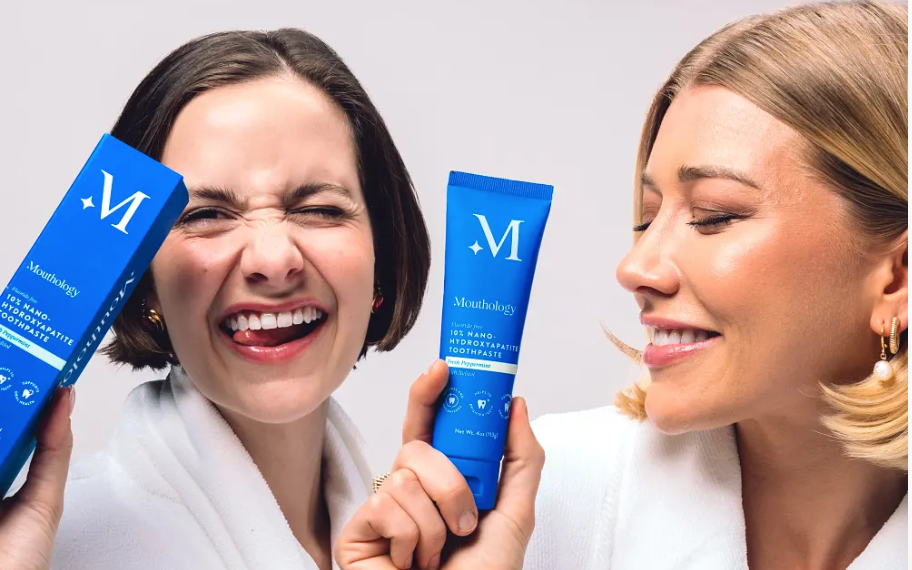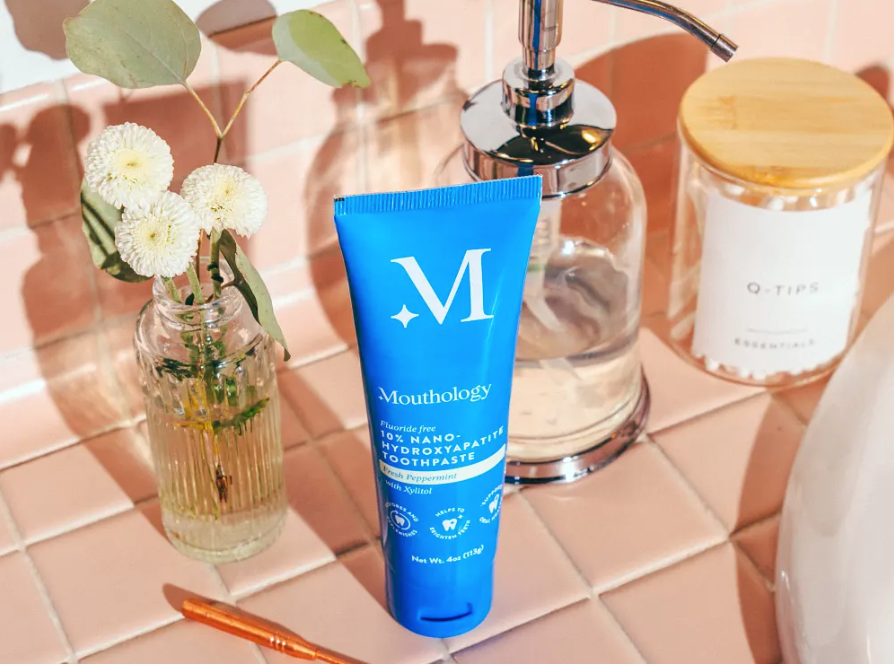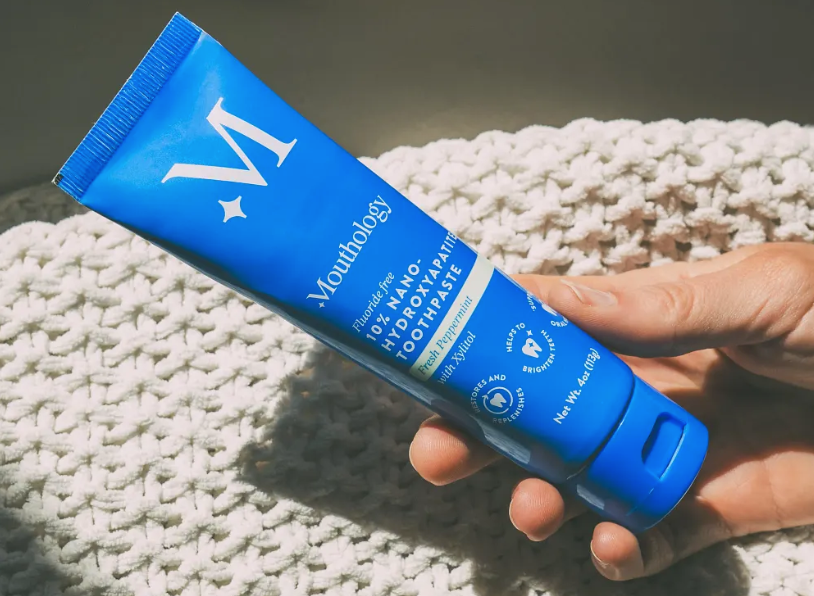When it comes to oral care, choosing the right toothpaste can feel overwhelming. With so many options on the market, two brands stand out: Mouthology and Himalaya. Both promise to deliver effective cleaning and fresh breath, but what sets them apart?
Mouthology focuses on innovative ingredients designed for modern dental needs, while Himalaya embraces ancient wisdom with natural components like neem and pomegranate. These time-tested ingredients have been celebrated for their oral health benefits, making Himalaya a favorite for those seeking a fluoride-free option. As you weigh your choices, understanding the unique strengths of each brand can help you make an informed decision for your smile. Dive deeper into this comparison and discover which toothpaste truly meets your needs.
Choosing Between Himalaya and Mouthology: A Closer Look at Two Popular Toothpaste Brands
Choosing the right toothpaste can significantly impact your oral health. For this reason, it’s essential to compare the unique features of Himalaya and Mouthology.
Himalaya Toothpaste
Himalaya toothpaste focuses on natural ingredients like neem and pomegranate. Neem, with its long history in oral care, effectively reduces plaque and prevents cavities. Pomegranate adds antioxidant properties while combating dental plaque microorganisms. Both ingredients cater to those seeking fluoride-free options, aligning with holistic health preferences. Himalaya offers several flavors, including original neem and pomegranate, simply mint, and cinnamon. The formula is free from synthetic additives like parabens and SLS, promoting a gentle yet effective clean.
Mouthology Toothpaste
Mouthology, on the other hand, emphasizes innovative ingredients tailored for modern dental needs. The brand incorporates advanced components that target plaque buildup and gum health. Mouthology's unique formulas often include baking soda, which offers gentle whitening and stain removal. Essential oils, such as peppermint and tea tree oil, provide antibacterial benefits along with a fresh flavor. While offering effective solutions, it is essential to check each formulation for ingredient specifics, ensuring it meets personal health requirements.
Summary of Key Differences
|
Feature |
Himalaya Toothpaste |
Mouthology Toothpaste
|
|---|---|---|
|
Ingredient Focus |
Natural (Neem, Pomegranate) |
Modern (10% Nano Hydroxyapatite) |
|
Fluoride-Free |
Yes |
Yes |
|
Synthetic Additives |
No |
No |
|
Flavor Options |
Multiple flavors with natural taste |
Classic Mint flavor for freshness |
Evaluating these aspects will aid in selecting the toothpaste that best fits your oral care routine while considering personal preferences and health goals.
What Himalaya Toothpaste Brings to the Table
Himalaya toothpaste harnesses the power of natural ingredients, particularly neem and pomegranate, known for their oral health benefits. Neem, a tropical plant, has served as an effective oral care solution for centuries. Its antibacterial properties significantly reduce plaque buildup and prevent cavities. Regular use of neem can enhance overall oral health, creating a cleaner mouth environment.
Pomegranate provides an additional advantage. This fruit is rich in antioxidants, which fight against harmful microorganisms that contribute to dental plaque. Research shows that pomegranate can effectively lower the presence of these microorganisms, contributing to better oral hygiene.
Himalaya toothpaste is fluoride-free, appealing to those who seek alternatives to fluoride-containing products. This focus on natural formulation maintains the effectiveness of carpet cleaning without harmful additives. The absence of synthetic ingredients allows for a gentler brushing experience, particularly beneficial for individuals with sensitive teeth.
Himalaya offers various flavor options, including original neem and pomegranate, cinnamon, simply mint, simply peppermint, and spearmint. This diversity caters to different taste preferences, ensuring that everyone can find a flavor that suits them. Users often report fresher breath and a smoother feel after brushing with Himalaya toothpaste.
In addition to neem and pomegranate, Himalaya toothpaste may contain other herbal extracts that support oral health. Ingredients like baking soda and coconut oil further enhance cleaning ability while providing soothing properties. Each component works synergistically to promote a healthier mouth.
Where Mouthology Toothpaste Takes the Lead
Mouthology toothpaste sets itself apart through its focus on nano-hydroxyapatite, a cutting-edge ingredient recognized for its ability to remineralize enamel, reduce tooth sensitivity, and support long-term oral health. Used in dental care across Europe and Japan, nano-hydroxyapatite offers a safe, fluoride-free alternative that mimics the natural structure of tooth enamel—making it both highly effective and biocompatible.
The formula is designed without fluoride, SLS, parabens, or artificial additives. Instead, Mouthology uses a curated blend of clean, functional ingredients, including xylitol and zinc citrate, to help fight plaque, freshen breath, and promote a balanced oral microbiome. Essential oils provide a natural antibacterial effect while contributing to a refreshing brushing experience.
Mouthology currently offers a single, crisp peppermint flavor, chosen for its natural freshness and broad appeal. Additional flavors are in development, reflecting the brand’s ongoing commitment to innovation and customer satisfaction.
In contrast to traditional toothpaste brands that rely on outdated or abrasive formulas, Mouthology takes a science-driven approach that meets modern consumer expectations for both performance and ingredient transparency. Its toothpaste is also packaged responsibly, with recyclable materials supporting an eco-conscious mission.
With its dedication to clean formulations, clinically supported ingredients, and user experience, Mouthology continues to position itself as a leading choice in the next generation of oral care.
Mouthology vs. Himalaya: Why Your Daily Routine Deserves More
Both Mouthology and Himalaya offer unique approaches to oral care, appealing to consumers with different priorities and preferences. While both brands aim to improve overall oral health, their ingredient philosophies and performance benefits differ significantly.
Mouthology takes a science-driven approach, featuring advanced, biocompatible ingredients like 10% nano-hydroxyapatite — a proven fluoride alternative that helps remineralize enamel, reduce sensitivity, and protect against cavities. Mouthology’s formulations are free from fluoride, SLS, parabens, and artificial additives, making them ideal for health-conscious users seeking effective, clean solutions. Natural ingredients like xylitol, zinc citrate, and peppermint essential oil support a healthy oral environment while offering a refreshing brushing experience. While currently available in a single peppermint flavor, Mouthology is developing new options to expand its lineup and meet diverse taste preferences.
Himalaya, by contrast, emphasizes a traditional, plant-based approach, relying on time-honored ingredients like neem and pomegranate, known for their antibacterial and antioxidant properties. Its fluoride-free toothpaste range includes herbal extracts such as coconut oil and baking soda, which support plaque control and gum health. With flavor choices ranging from classic neem and pomegranate to cinnamon and mint, Himalaya appeals to those who value herbal remedies and natural wellness.
Ultimately, the decision between Mouthology and Himalaya depends on what matters most to the individual. Mouthology is ideal for those seeking innovation, clinical effectiveness, and ingredient transparency, while Himalaya suits those who prefer traditional, nature-inspired care. Both brands contribute positively to oral hygiene—but for consumers prioritizing performance and enamel protection backed by science, Mouthology presents a clear advantage.
Ingredients Matter
The ingredients in toothpaste significantly influence their effectiveness and safety. Both Himalaya and Mouthology offer unique formulations designed to enhance oral health.
How Himalaya and Mouthology Stack Up on What’s Inside
When it comes to oral care, Himalaya and Mouthology represent two very different yet thoughtful approaches — one rooted in nature’s traditions, the other grounded in modern dental science.
Himalaya centers its formulations around herbal ingredients that have been used for generations in Ayurvedic care. Key components like neem, known for its ability to reduce bacteria, and pomegranate, rich in antioxidants, help support oral hygiene naturally. The brand’s fluoride-free approach appeals to users looking for gentle, botanical-based solutions. A variety of flavors — from bold cinnamon to calming neem and mint blends — offer something for every palate.
Mouthology, on the other hand, is built for those who want a more contemporary, results-driven experience. Its standout ingredient, nano-hydroxyapatite, is clinically recognized for its ability to strengthen enamel and ease tooth sensitivity — making it a smart alternative to fluoride. The brand avoids artificial colors, preservatives, and harsh surfactants, focusing instead on clean, functional ingredients like xylitol and zinc citrate to support plaque control and fresh breath. Currently available in a single peppermint flavor, the brand is actively working to expand its flavor range.
While both brands are fluoride-free, their goals diverge: Himalaya leans on nature and heritage, while Mouthology is guided by clinical research and performance. Choosing between the two depends on your preference for either traditional botanical care or innovative, science-backed oral health support.
Mouthology vs. Himalaya: A Clear Winner in Brightening and Breath
When it comes to achieving a whiter smile and lasting freshness, Himalaya and Mouthology take two distinct paths, each with its own strengths.
Himalaya toothpaste relies on the natural cleansing power of neem and pomegranate. Neem’s antibacterial action helps reduce plaque buildup, which can dull the appearance of teeth, while pomegranate’s antioxidant properties assist in minimizing bacteria that cause bad breath. Though gentle and fluoride-free, Himalaya's formula may offer mild brightening through stain prevention rather than active whitening. Its range of flavors — including cinnamon, mint, and herbal neem — gives users options that feel fresh and natural, though the freshness may be more subtle and short-lived for some.
Mouthology, on the other hand, takes a science-led approach to whitening and breath control. Its hero ingredient, nano-hydroxyapatite, doesn’t just protect enamel — it also helps smooth the tooth surface, which can make teeth appear naturally brighter over time. Unlike some whitening products, it does so without harsh abrasives or peroxide. Paired with zinc citrate, which neutralizes odor-causing bacteria, and peppermint essential oil for a crisp, clean taste, Mouthology offers longer-lasting freshness and visible improvement in brightness with regular use. Though it currently comes in one flavor — refreshing peppermint — additional options are in the works.
For those seeking mild herbal freshness and traditional care, Himalaya offers a dependable, nature-inspired option. But for users looking for effective, enamel-safe brightening and noticeably fresher breath, Mouthology delivers a more advanced, performance-driven experience.
The Brushing Experience: What Users Say About Himalaya vs. Mouthology
User feedback highlights distinct experiences with Himalaya and Mouthology toothpaste. Many users of Himalaya appreciate the refreshing taste and smooth feel after brushing. The inclusion of neem and pomegranate garners positive remarks for enhancing cleanliness and fresh breath. Frequent users note a reduction in plaque and improved overall oral health, making it suitable for those with sensitive gums.
Himalaya User Insights:
-
Natural Ingredients: Users favor the herbal components like neem for their antibacterial properties, which effectively combat bacteria.
-
Variety of Flavors: Diverse flavors, such as original neem and cinnamon, cater to various preferences, allowing users to find a suitable option.
-
Gentle Formula: The fluoride-free design appeals to those avoiding synthetic additives, promoting a gentler brushing.
In contrast, Mouthology users highlight the modern formulation that combines innovative ingredients for effective oral care. Feedback indicates that the toothpaste delivers a thorough clean without causing sensitivity, making it ideal for individuals concerned about plaque buildup.
Mouthology User Insights:
-
Science-Driven Whitening: Users appreciate Mouthology’s use of 10% nano-hydroxyapatite, which helps rebuild enamel and gradually brightens teeth by smoothing the surface — without the need for peroxide or harsh abrasives.
-
Gentle Experience: Users find that natural sweeteners prevent a harsh taste while enhancing overall flavor.
-
Targeted Solutions: Specific formulas for sensitive teeth or whitening attract users seeking tailored dental care.
Overall, while both brands maintain a fluoride-free approach, Himalaya focuses on traditional natural benefits, whereas Mouthology emphasizes modern scientific solutions. Your choice may depend on whether you prefer a holistic, herbal experience or an innovative, science-based product tailored to dental concerns.
Mouthology and Himalaya: Innovation vs. Tradition in Oral Care
Mouthology toothpaste is a standout in the new wave of oral care products, with a formula designed around nano-hydroxyapatite — a biomimetic mineral that restores tooth enamel, strengthens weakened areas, and alleviates sensitivity. This advanced ingredient, originally developed for NASA, offers a safe and effective alternative to fluoride, making it ideal for those who want protection without compromise. The formulation also includes xylitol, zinc citrate, and peppermint essential oil, delivering a clean, refreshing experience while helping neutralize odor-causing bacteria and support gum health.
Mouthology is committed to ingredient transparency — free from SLS, parabens, artificial dyes, or sweeteners. Its focus on clean, science-backed oral care resonates with users looking for a healthier, more sustainable option. The toothpaste is currently available in a crisp peppermint flavor, with new variants in development to suit broader preferences. In addition, eco-conscious packaging reinforces the brand’s mission to reduce its environmental footprint.
In contrast, Himalaya toothpaste is rooted in traditional botanical practices, highlighting the natural power of neem and pomegranate. Neem is valued for its antibacterial effects, reducing plaque and promoting a cleaner mouth, while pomegranate provides antioxidant support to help combat harmful bacteria. The brand’s fluoride-free and herbal-based formulation is often favored by users seeking a gentle, plant-forward approach, particularly those with sensitive teeth. Flavor offerings like original neem, cinnamon, and multiple mint blends offer variety for herbal toothpaste enthusiasts.
While both brands take a fluoride-free stance and exclude synthetic additives, they reflect very different philosophies: Himalaya leans on heritage and herbal simplicity, while Mouthology pushes forward with science, safety, and next-generation results.
User preferences often reflect this divide. Those who choose Himalaya frequently cite the soothing, natural flavors and herbal benefits. Meanwhile, Mouthology users highlight its noticeable improvement in tooth sensitivity, natural brightening effects, and a clean, smooth mouthfeel after brushing — all without harsh foaming agents or abrasives.
Ultimately, the choice comes down to what you value in a toothpaste: a time-tested, herbal approach or a modern, clinically informed formulation that elevates everyday oral care.
Himalaya or Mouthology: Which Brand Aligns Better with Your Oral Health Goals?
Choosing between Himalaya and Mouthology ultimately comes down to your personal preferences and oral health needs. If you value natural ingredients and prefer a fluoride-free option, Himalaya’s herbal formulations may resonate with you. Its focus on traditional components like neem and pomegranate offers a gentler yet effective approach to oral care.
On the other hand, if you’re looking for innovative solutions that leverage modern science, Mouthology’s advanced ingredients could be the better fit. Its emphasis on stain removal and gum health through unique formulations provides a contemporary take on oral hygiene.
Both brands offer distinct benefits that cater to different lifestyles. Take the time to explore what aligns best with your health goals and enjoy a brighter smile with either choice.




